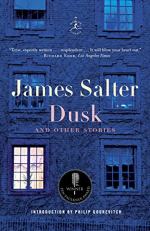
|
| Name: _________________________ | Period: ___________________ |
This test consists of 15 multiple choice questions and 5 short answer questions.
Multiple Choice Questions
1. What is the one thing that Frank advises Alan he should not let his wife take in the divorce?
(a) Their dog.
(b) The apartment.
(c) Part of their law practice.
(d) Their child.
2. What does the allusion to Frik and Frak imply about how the higher-ups at their firm see Alan and Frank?
(a) They are considered inept.
(b) They are seen as determined.
(c) They are almost invisible.
(d) They are seen as one entity.
3. On the night of Brenda's party, how long has Alan been in New York?
(a) About 4 years.
(b) About 6 years.
(c) About 8 years.
(d) About 2 years.
4. From context, what is the best interpretation of the word "funny" in "In those days they were living in apartments with funny furniture" (25)?
(a) The furniture is of poor quality.
(b) The furniture is likely stolen.
(c) The furniture gives people a strange feeling.
(d) The furniture is amusing.
5. At the end of the story's first section, what is Alan trying to decide about Frank?
(a) Whether Frank knows how to make himself happy.
(b) Whether Frank is secretly insecure.
(c) Whether there is something missing inside Frank.
(d) Whether Frank is really his friend.
6. Which character is identified as being in an "intermediate state though looking assured" (31)?
(a) Alan.
(b) Brenda.
(c) Frank.
(d) Nan.
7. Why does Brenda not want to take the promotion she has been offered?
(a) She does not want to move to the Washington, D.C. office.
(b) She does not think she would be able to do the job.
(c) She does not think it would be a good idea to be working so closely with Frank.
(d) She does not think much of the man she would be working for.
8. What does Frank say New York is divided into?
(a) People on their way up and people on their way down.
(b) Lawyers and clients.
(c) People born in the city and people born elsewhere.
(d) Haves and have-nots.
9. From context, what can be inferred about the neighborhood of Bryant Park?
(a) It is full of law offices.
(b) It is expensive.
(c) It is predominantly Italian.
(d) It is dangerous.
10. What technique is used in the sentence, "Which was what made them inseparable, the hours of work, the lyric, the dreams" (26)?
(a) Epistrophe.
(b) Epizeuxis.
(c) Asyndeton.
(d) Litotes.
11. What is a logical inference about who "Hopie" is?
(a) Brenda's mother.
(b) Brenda's sister.
(c) Alan's wife.
(d) Alan's child.
12. What does working on the Hardmann Roe case remind Frank and Alan of?
(a) Their questions about whether law is the right career.
(b) Their fathers' high expectations.
(c) Being students.
(d) A championship game.
13. From context, what is the best interpretation of the word "hot" in Alan's comment about the new receptionist: "She's hot" (26)?
(a) She is angry about something.
(b) She is sexually available.
(c) She is physically attractive.
(d) She is uncomfortably warm.
14. On page 30, what is being compared to an "infinite forest, the trunks and vines blocking out the light"?
(a) The legal profession in general.
(b) Frank and Alan's relationship.
(c) Life in New York City.
(d) The Hardmann Roe case.
15. When Nan asks for Frank's help renegotiating her divorce settlement, what advice does he give her?
(a) Get married again.
(b) Hire a private detective.
(c) Pretend that your ex-husband was abusive.
(d) Move somewhere cheaper.
Short Answer Questions
1. What technique is used in the sentence "In the morning in stale darkness the subways shrieked" (26)?
2. When Alan and Frank miss Brenda's party, what is Alan disappointed about?
3. Who is Camille?
4. What is Alan's family's religious background?
5. What does Nan say is the cause of her life "made up of disappointments" (32)?
|
This section contains 631 words (approx. 3 pages at 300 words per page) |

|




